Sunflower Watercolor

Photograph
I have a bird feeder post in my backyard. One of the three feeders is a cardinal feeder, and it holds black sunflower seeds. The cardinals, and sometimes other birds, tug the seeds out through the mesh and either eat them or drop them to the ground, where smaller birds, squirrels, and rabbits grab them. Sometime last summer a bird or a squirrel or a rabbit managed to move a viable sunflower seed from the backyard to the front, and the seed managed to get enough soil and water to root and grow.
Toward the end of the summer, I found this volunteer sunflower growing at the edge of the front wall of the house, off the sidewalk. One of the exercises in the watercolor course I’m working through, lesson 39, is a hibiscus flower watercolor demonstration. I never try to copy the exercise, that would be boring and less than useful, I’m looking to duplicate the technique, and understand why the artist did what they did, and how the techniques can be used. So in place of the hibiscus I used a sunflower.
In Intermediate Painting in art school, the task was to create a painting in the same way a master painter had created it. The student would find a Monet, or a Picasso, a Rembrandt, or a Van Gogh, and find the signs of how the painting was constructed, try and get why the artist made those brushstrokes, why have the paint thick or thin on the canvas, why those decisions on composition, to understand the way the painting came about from a materials and technique point of view. Research was acceptable, anything that brought an understanding of the work and the techniques. As students we were to find and recreate the same technique toward the same result, and paint a similar work. Very different than copying what you see in the end result and just see and duplicate the surface and end result.
With different colors and textures and conformation, the techniques the artist demonstrated in my watercolor lesson can’t be copied, they have to be understood and used to create a different kind of flower.
Process
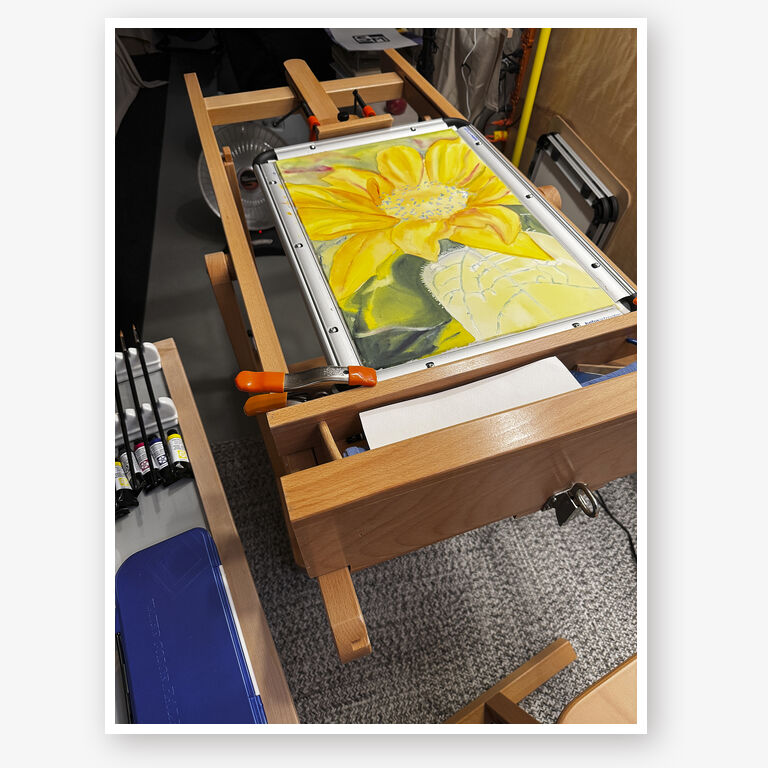
I’ve tried several methods for stretching watercolor paper.
Most have been hit or miss. Even with 300g (140 lb.) paper, sufficient water causes it to buckle, so not stretching, at least for me, isn’t an option. I found Keba stretchers, which lock the paper into a frame, placing tension across the surface. Flood cottom rag paper and it can stretch and buckle for a bit, but returns to flat once it dries. These frames make painting on paper very close to working on canvas. They are lightweight and portable. I like how they stretch and hold the paper through the painting process.
The Keba frames come with a center backing board. You can use the frame with or without the board. For instance, working in plein air, you can unassemble the frame, leave the backing board in the studio, roll up watercolor paper and have a small bundle to carry to your location. This particular painting and frame are without the backing board, and using it like that the paper is stretched tight and resonates like a drumhead.
The paper used most definitely makes a difference.
I found a wood pulp studio (student) paper I thought was inexpensive and that I could use for general work in watercolor. I unfortunately bought a bulk pack of 100 sheets. When I started using it for more than just quick one-wash-and-done-studies, it started to break at the surface and became unusable. I’ll try it with pastels, at least for studies, but for watercolor it is just not worth working with.
Since then I’ve stuck with Fabriano Artistico 140 and 300 lb papers. I’ve got some samples of some other brands of paper I’ll try over time, but the Fabriano is acid-free cotton rag and a joy to work with.
Painting
When the paper is released from the frame it has a downward crease where the frame applied tension and held the paper. I’m still discovering what I want to do with that. So far I’m ironing it out with a steam iron set to cotton.
I’ll see how this works in a mat and frame. I’m really reluctant to cut it down. These frames come in full imperial (22" x 30"), 1/2 imperial (this painting, 15" x 22") and 1/4 imperial (11" x 15"). I’d like to keep the edge rather than cut it down.
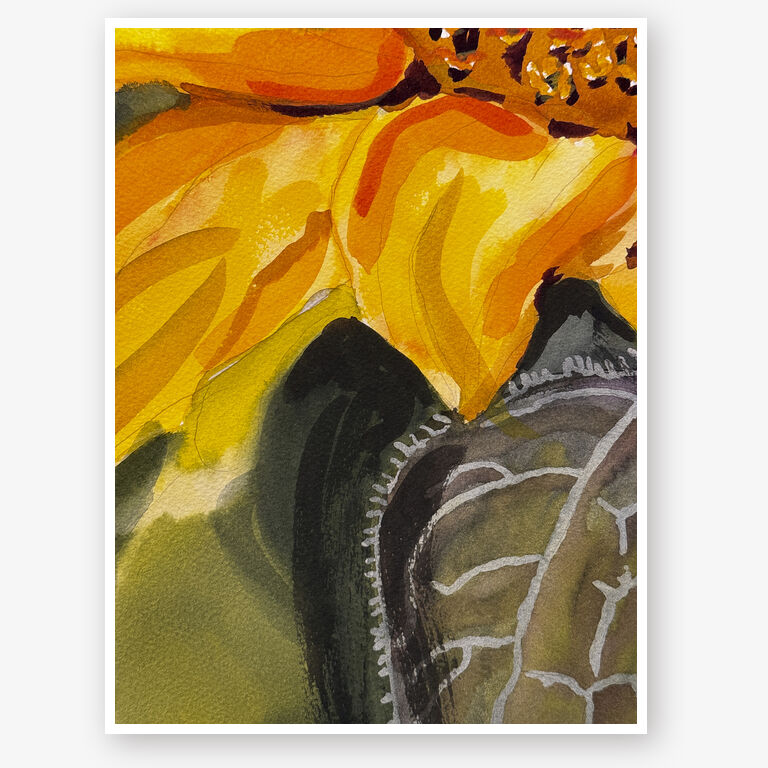
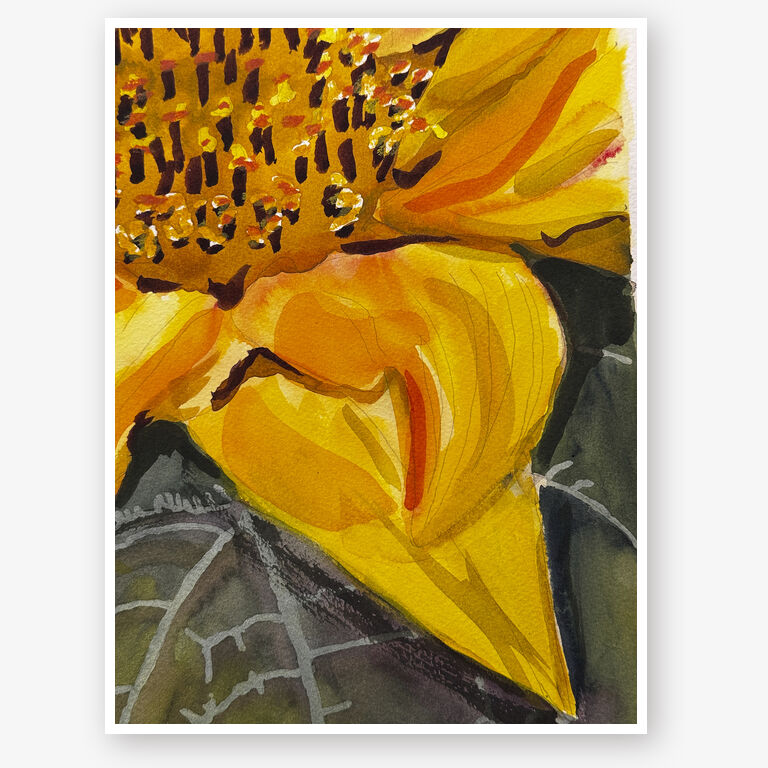
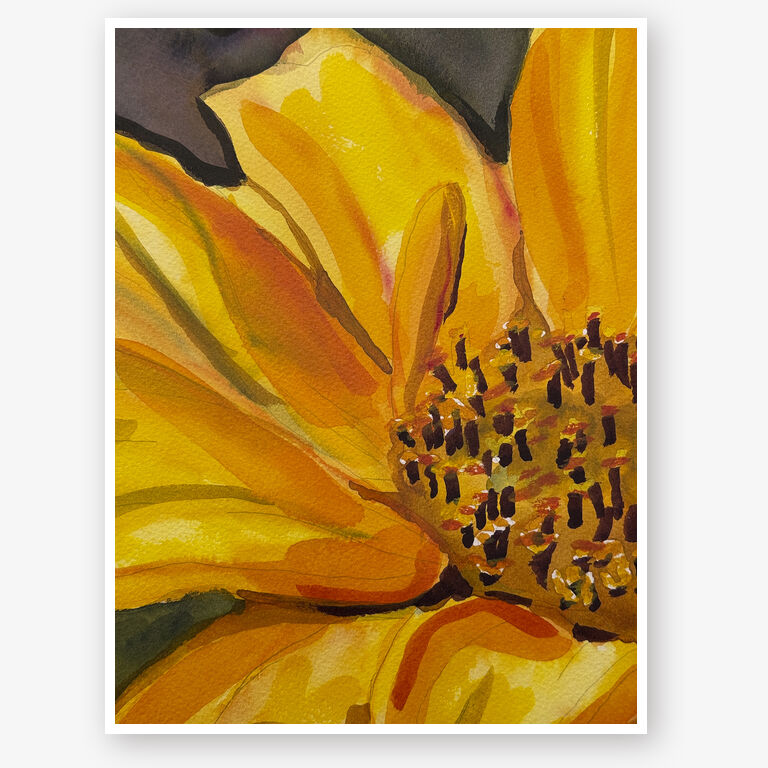
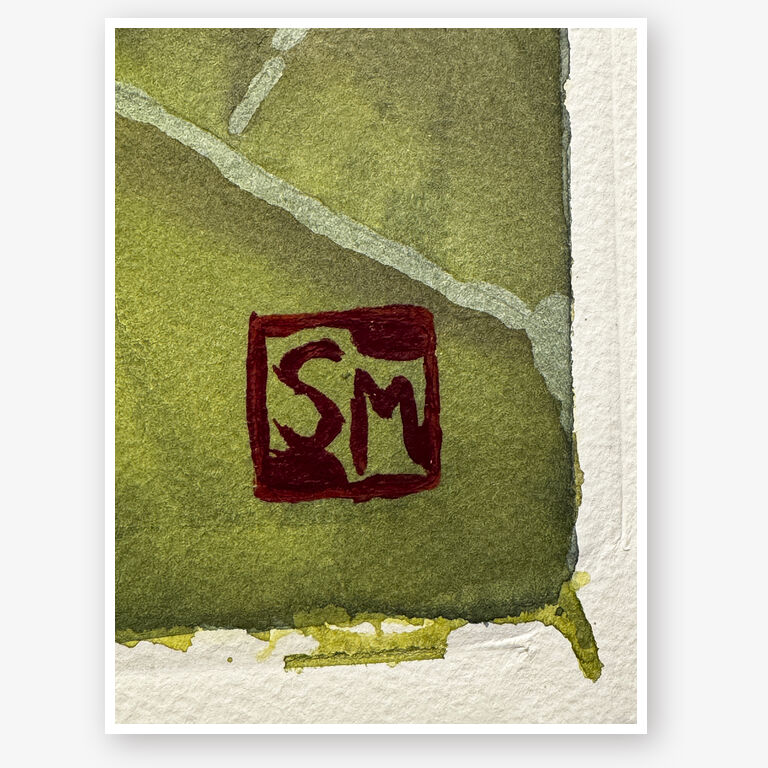

—spence
